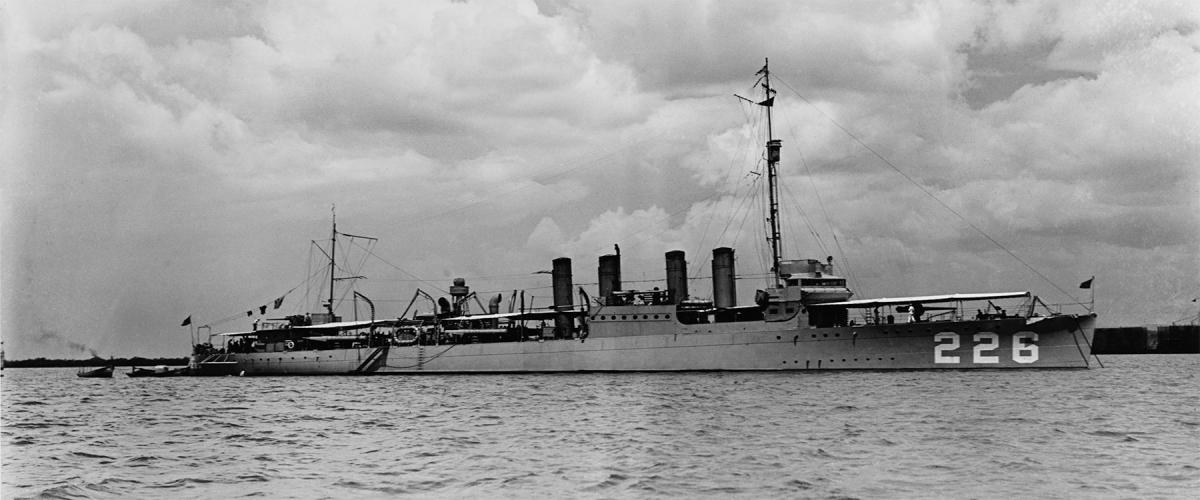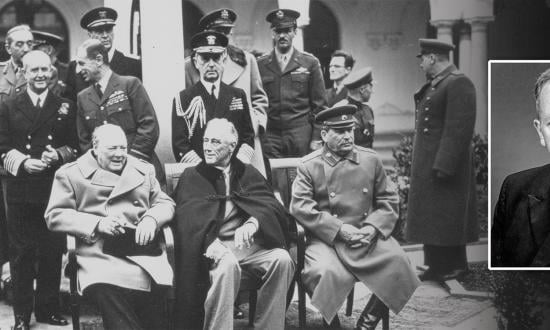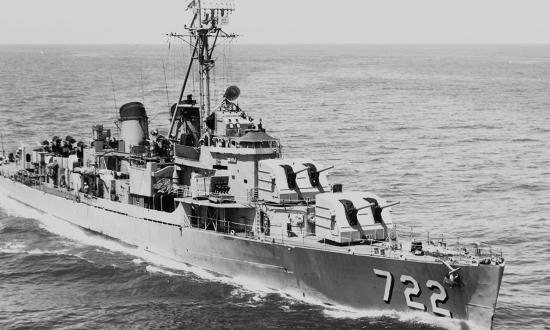Future Chief Warrant Officer Cecil S. King Jr.—who would serve as administrative assistant to three Chiefs of Naval Operations (CNOs): Admirals William Fechteler, Robert Carney, and Arleigh Burke—left Aransas Pass, Texas, in 1934 at age 17 and enlisted in the Navy. “There was no work in my hometown,” he recalled in these edited excerpts from his Naval Institute oral history. “When I graduated from high school and received a form letter from the Navy recruiter over at Corpus Christi, that just put it all together for me.”
His first tour was with a 5-inch gun crew on the USS Portland (CA-33). By 1940, he had risen to flag-staff yeoman serving Admiral Thomas Hart, Chief of the U.S. Asiatic Fleet, on the USS Augusta (CA-31). He transferred to the new flagship USS Houston (CA-30) and was serving on the flag staff ashore in Manila when the Japanese attacked. Hart and most of his fleet put to sea. King and his shipmates ashore made their way to Corregidor, and in late December he boarded the four-stack destroyer USS Peary (DD-226) for the escape south.
We got underway in early evening. A lot of the crew were busy painting the topside green, tying palm leaves to the lifelines, putting up canvas between the stacks to make the Peary look like an island. She had had a collision at sea with the USS Pillsbury [DD-227] two or three weeks before the war started, lost about 20 feet off her bow, and while in drydock getting a stubby jury bow was further damaged by Japanese attack.
Toward the middle of the first night out, we fell in with some Japanese ships. They were going toward the Philippines and we were going out. It got pretty tense. Here we were in a busted-up old four-piper with no armament to speak of. Our skipper decided to go ahead right on down the road, not answering any signals. Maybe they’d think we were some dumb stepchild of theirs, a ship off course or something. And that’s essentially what happened. They had a blinker in a long tube. We could see these orange blinkers, but we didn’t respond. I assume they thought, “Who is that dumb Lieutenant Kokamota and whatever ship he’s on?” Nothing happened, but it was very hairy, lasted a couple of hours.
The next day we pulled alongside one of the islands at Cebu, then headed south and pulled in at Mindanao. Some locals came out and told us there were Japanese ships on the other side of the island. We headed out again in the direction of Borneo. Around mid-afternoon, an Emily came out, a large seaplane, and circled three or four times. She made two torpedo attacks on us, each time dropping one torpedo and each time missing badly. A battleship could have avoided them.
The next evening farther south, three planes, twin-engine dive-bombers, Lockheed Hudsons, came over and made a sweep around us. We could see the red, white, and blue circles under their wings. Everybody cheered. Damned if they didn’t come back and make a run on us. One kid was killed. One bomb hit the depth charge rack on our fantail. One of the depth charges caught fire but didn’t explode. We rolled it off.
The Peary survived the attack, was patched up at Halmahera, and finally made her way to Port Darwin.
When World War II ended, King had several tours as chief yeoman-in-charge, captain’s writer, admiral’s writer, and, rising to the rank of warrant officer, personnel officer on board the USS Midway (CVB-41). From there, after a quick interim tour, in 1952 he became the CNO’s administrative assistant in the Pentagon, heading a five-person staff.
We were the CNO’s mailroom; everything that came to him came through us.
The CNOs? Admiral Fechteler was a big man physically, booming voice, all mission. Admiral Carney was more outgoing, a colorful, articulate guy—more congressionally oriented. Burke was both, the whole tamale. He demanded that people work long hours but wasn’t sparing with praise. There were times when I would leave at some ungodly hour at night, and he would just happen to be in the hall, say something nice.






![Though his winning Prize Essay never made it to the pages of Proceedings, Professor Philip Alger believed in the power of the open forum. As Lieutenant Commander Roy Smith wrote in Proceedings in October 1923, “Professor Alger’s advice to [Naval Academy] graduates was always to take up a specialty; and he advised them further that in no other way could they keep in touch with their profession save by careful study of the progress marked out in the Proceedings.”](/sites/default/files/styles/teaser/public/LWF-PRO-3-24%201%20Hero.jpg?itok=Bn3FWpwg)

